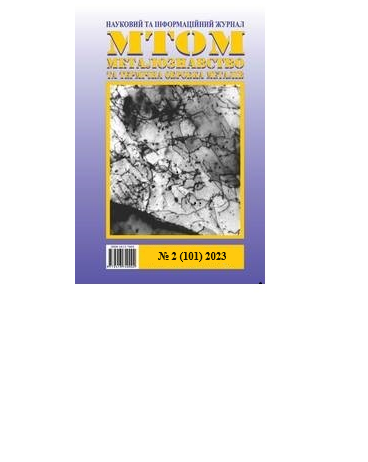INVESTIGATION OF THE STRUCTURE AND PROPERTIES OF FERROUS NICKEL ALLOYS AFTER MOLDING BY SELECTIVE LASER MELTING
DOI:
https://doi.org/10.30838/J.PMHTM.2413.040723.73.987Keywords:
selective laser melting, mechanical properties, single track, microstructure, grainAbstract
Problem statement. The selective laser melting method is a promising technology for the production of parts from heat-resistant alloys. Traditional methods of manufacturing such parts require additional technological equipment and processing, which increases the time of production preparation and, as a result, to the creation of a large number of raw materials. Selective laser melting allows you to produce parts of a complex configuration without the need for additional equipment. Molding of parts using additive technologies, which ensure a reduction in product preparation time, mechanical processing operations, and an increase in the efficiency of material use. Their application in the technological cycle of manufacturing products is an urgent task today. However, before the introduction into the technological process of forming products from heat-resistant alloys by the selective laser melting method, it is necessary to carry out a comprehensive analysis of the mechanical and technological characteristics of the material and its microstructure, which affects the final properties of the parts. The purpose of the article. Investigation of the possibility of implementing the selective laser melting method for the production of parts from strong alloys, analysis of the mechanical characteristics of the material, as well as the microstructure, which affects the final properties of the parts. Conclusions. Studies have shown that the selective laser melting method is effective for the production of complex parts from heat-resistant alloys. The obtained data on the mechanical properties after heat treatment of the Inconel718 alloy demonstrate its compliance with the requirements of the AMS 5662 standard and its suitability for working under extreme conditions. In the microstructure, highlighted features are revealed, which are characteristic of the selective laser melting method, as well as the presence of visible tracks and a special texture − elongated grains in the direction of growing parts. Research points to the potential of additive technologies in improving technological processes and properties of alloys for the production of heat-resistant alloy parts.
Downloads
Published
Issue
Section
License
Authors that are published in this journal agree to follow the conditions:
Authors reserve the right to the authorship of his work and cede the right to the journal of first publication of this work on conditions of the license under the Creative Commons Attribution License, which allows others to distribute it freely with the obligatory reference to the author of the original work and the first publication of the work in this journal.

